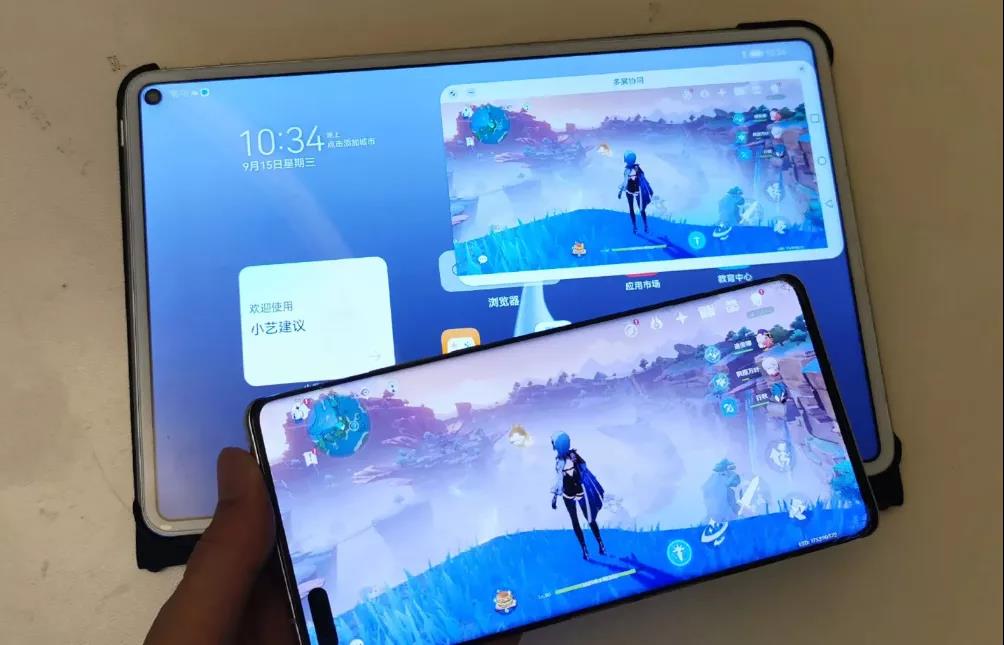在实际应用开发中,时不时的会遇到 AI 领域相关的一些技术,本节主要详细讲述一下语音播报技术,语音播报可能涉及的领域,如:实时语音交互、超长文本播报等。
对于 HarmonyOS 开发者而言,也需要了解和掌握 HarmonyOS AI 领域相关技术能力。
功能介绍
语音播报主要是基于华为智慧引擎(HUAWEI HiAI Engine)中的语音播报引擎,向开发者提供人工智能应用层 API。该技术提供将文本转换为语音并进行播报的能力。
开发指南
①创建与 TTS 服务的连接
context 为应用上下文信息,应为 ohos.aafwk.ability.Ability 或 ohos.aafwk.ability.AbilitySlice 的实例或子类实例。 private static final TtsListener ttsListener = new TtsListener() { @Override public void onEvent(int eventType, PacMap pacMap) { // Log.info(“onEvent:” + eventType); if (eventType == TtsEvent.CREATE_TTS_CLIENT_SUCCESS) { // Log.info(“TTS Client create success”); } } @Override public void onStart(String utteranceId) { // Log.info(utteranceId + ” audio synthesis begins”); } @Override public void onProgress(String utteranceId, byte[] audioData, int progress) { // Log.info(utteranceId + ” audio synthesis progress:” + progress); } @Override public void onFinish(String utteranceId) { // Log.info(utteranceId + ” audio synthesis completed”); } @Override public void onSpeechStart(String utteranceId) { // Log.info(utteranceId + ” begins to speech”); } @Override public void onSpeechProgressChanged(String utteranceId, int progress) { // Log.info(utteranceId + ” speech progress:” + progress); } @Override public void onSpeechFinish(String utteranceId) { // Log.info(utteranceId + ” speech completed”); } @Override public void onError(String utteranceId, String errorMessage) { // Log.info(utteranceId + ” errorMessage: ” + errorMessage); } }; TtsClient.getInstance().create(context, ttsListener);
②在 TTS 接口创建成功后初始化 TTS 引擎: TtsParams ttsParams = new TtsParams(); ttsParams.setDeviceId(“deviceId”); boolean initResult = TtsClient.getInstance().init(ttsParams);
③初始化 TTS 引擎成功后调用音频转换并播放接口: if (initResult) { TtsClient.getInstance().speakText(“欢迎使用语音播报!”, null); }
④使用完成后销毁 TTS 客户端: TtsClient.getInstance().destroy();
示例代码
xml 布局: <?xml version=”1.0″ encoding=”utf-8″?> <DirectionalLayout xmlns:ohos=”http://schemas.huawei.com/res/ohos” ohos:height=”match_parent” ohos:width=”match_parent” ohos:orientation=”vertical”> <Text ohos:height=”match_content” ohos:width=”match_content” ohos:margin=”15vp” ohos:text=”AI语音播报” ohos:text_size=”23fp” ohos:top_margin=”40vp”/> <TextField ohos:id=”$+id:text” ohos:height=”300vp” ohos:width=”match_content” ohos:layout_alignment=”horizontal_center” ohos:left_margin=”20vp” ohos:multiple_lines=”true” ohos:right_margin=”20vp” ohos:text=”某软件公司是中国领先的软件与信息技术服务商,企业数字转型可信赖合作伙伴。公司2001年成立于北京,立足中国,服务全球市场。经过18年发展,目前公司在全球43个城市设有90多个分支机构26个全球交付中心,员工总数近60000人。该软件公司拥有深厚的行业积累和领先的技术实力,可以为客户提供端到端的数字化产品和服务,包括数字化咨询与解决方案、云智能与基础设施、软件与技术服务和数字化运营等;在10余个重要行业服务超过1000家国内外客户,其中世界500强企业客户超过110家,为各领域客户创造价值。” ohos:text_size=”50″ ohos:top_margin=”20vp” /> <DirectionalLayout xmlns:ohos=”http://schemas.huawei.com/res/ohos” ohos:height=”match_parent” ohos:width=”match_parent” ohos:orientation=”horizontal”> <Button ohos:id=”$+id:read_btn” ohos:height=”35vp” ohos:width=”80vp” ohos:background_element=”$graphic:background_button” ohos:margin=”15vp” ohos:text=”语音播报” ohos:text_size=”16fp”/> <Text ohos:id=”$+id:time” ohos:height=”35vp” ohos:width=”150vp” ohos:margin=”15vp” ohos:text=”播报耗时:0 s” ohos:text_size=”16fp”/>
案例代码: package com.isoftstone.tts.slice;
import com.isoftstone.tts.ResourceTable; import ohos.aafwk.ability.AbilitySlice; import ohos.aafwk.content.Intent; import ohos.agp.components.Button; import ohos.agp.components.Component; import ohos.agp.components.Text; import ohos.agp.components.TextField; import ohos.ai.tts.TtsClient; import ohos.ai.tts.TtsListener; import ohos.ai.tts.TtsParams; import ohos.ai.tts.constants.TtsEvent; import ohos.eventhandler.EventHandler; import ohos.eventhandler.EventRunner; import ohos.eventhandler.InnerEvent; import ohos.hiviewdfx.HiLog; import ohos.hiviewdfx.HiLogLabel; import ohos.utils.PacMap; import java.util.Timer; import java.util.TimerTask; import java.util.UUID;
public class MainAbilitySlice extends AbilitySlice { private static final HiLogLabel LABEL_LOG = new HiLogLabel(3, 0xD001100, “MainAbilitySlice”); private TextField infoText; private Text timeText; private boolean initItsResult; private static final int EVENT_MSG_TIME_COUNT = 0x1000002; private int time = 0; private Timer timer = null; private TimerTask timerTask = null;
private EventHandler handler = new EventHandler(EventRunner.current()) { @Override protected void processEvent(InnerEvent event) { switch (event.eventId) { case EVENT_MSG_TIME_COUNT: getUITaskDispatcher().delayDispatch(() -> { time = time + 1; HiLog.info(LABEL_LOG, “播报耗时:” + time + ” s”); timeText.setText(“播报耗时:” + time + ” s”); }, 0); break; default: break; } } }; @Override public void onStart(Intent intent) { super.onStart(intent); super.setUIContent(ResourceTable.Layout_ability_main); initView(); initTtsEngine(); } private void initView() { infoText = (TextField) findComponentById(ResourceTable.Id_text); Button readBtn = (Button) findComponentById(ResourceTable.Id_read_btn); timeText = (Text) findComponentById(ResourceTable.Id_time); readBtn.setClickedListener(this::readText); } private void initTtsEngine() { TtsClient.getInstance().create(this, ttsListener); } private void readText(Component component) { if (initItsResult) { TtsParams ttsParams = new TtsParams(); ttsParams.setSpeed(0);//语速0~15越大越快 TtsClient.getInstance().setParams(ttsParams); HiLog.info(LABEL_LOG, “initItsResult is true, speakText”); TtsClient.getInstance().speakText(infoText.getText(), null); } else { HiLog.error(LABEL_LOG, “initItsResult is false”); } } private TtsListener ttsListener = new TtsListener() { @Override public void onEvent(int eventType, PacMap pacMap) { HiLog.info(LABEL_LOG, “onEvent…”); // 定义TTS客户端创建成功的回调函数 if (eventType == TtsEvent.CREATE_TTS_CLIENT_SUCCESS) { TtsParams ttsParams = new TtsParams(); ttsParams.setDeviceId(UUID.randomUUID().toString()); initItsResult = TtsClient.getInstance().init(ttsParams); } } @Override public void onStart(String utteranceId) { HiLog.info(LABEL_LOG, “onStart…”); } @Override public void onProgress(String utteranceId, byte[] audioData, int progress) { } @Override public void onFinish(String utteranceId) { HiLog.info(LABEL_LOG, “onFinish…”); } @Override public void onError(String s, String s1) { HiLog.info(LABEL_LOG, “onError…”); } @Override public void onSpeechStart(String utteranceId) { // 开始计时 HiLog.info(LABEL_LOG, “onSpeechStart…”); if (timer == null && timerTask == null) { timer = new Timer(); timerTask = new TimerTask() { public void run() { handler.sendEvent(EVENT_MSG_TIME_COUNT); } }; timer.schedule(timerTask, 0, 1000); } } @Override public void onSpeechProgressChanged(String utteranceId, int progress) { } @Override public void onSpeechFinish(String utteranceId) { // 结束计时 HiLog.info(LABEL_LOG, “onSpeechFinish…”); timer.cancel(); time = 0; timer = null; timerTask = null; } };}
实现效果
来源:鸿蒙技术社区
免责声明:文章内容来自互联网,本站不对其真实性负责,也不承担任何法律责任,如有侵权等情况,请与本站联系删除。
转载请注明出处:在鸿蒙上实现简单的语音播报!-鸿蒙系统怎么语音唤醒 https://www.yhzz.com.cn/a/11425.html


